CTCF and EGR1 suppress breast cancer cell migration through transcriptional control of Nm23-H1
- PMID: 33436746
- PMCID: PMC7804126
- DOI: 10.1038/s41598-020-79869-9
CTCF and EGR1 suppress breast cancer cell migration through transcriptional control of Nm23-H1
Abstract
Tumor metastasis remains an obstacle in cancer treatment and is responsible for most cancer-related deaths. Nm23-H1 is one of the first metastasis suppressor proteins discovered with the ability to inhibit metastasis of many cancers including breast, colon, and liver cancer. Although loss of Nm23-H1 is observed in aggressive cancers and correlated with metastatic potential, little is known regarding the mechanisms that regulate its cellular level. Here, we examined the mechanisms that control Nm23-H1 expression in breast cancer cells. Initial studies in aggressive MDA-MB-231 cells (expressing low Nm23-H1) and less invasive MCF-7 cells (expressing high Nm23-H1) revealed that mRNA levels correlated with protein expression, suggesting that transcriptional mechanisms may control Nm23-H1 expression. Truncational analysis of the Nm23-H1 promoter revealed a proximal and minimal promoter that harbor putative binding sites for transcription factors including CTCF and EGR1. CTCF and EGR1 induced Nm23-H1 expression and reduced cell migration of MDA-MB-231 cells. Moreover, CTCF and EGR1 were recruited to the Nm23-H1 promoter in MCF-7 cells and their expression correlated with Nm23-H1 levels. This study indicates that loss of Nm23-H1 in aggressive breast cancer is apparently caused by downregulation of CTCF and EGR1, which potentially drive Nm23-H1 expression to promote a less invasive phenotype.
Conflict of interest statement
The authors declare no competing interests.
Figures
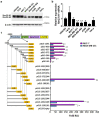

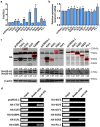
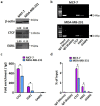
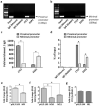
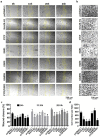

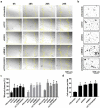


Similar articles
-
Nm23-H1 inhibits lung cancer bone-specific metastasis by upregulating miR-660-5p targeted SMARCA5.Thorac Cancer. 2020 Mar;11(3):640-650. doi: 10.1111/1759-7714.13308. Epub 2020 Feb 5. Thorac Cancer. 2020. PMID: 32022430 Free PMC article.
-
Mutations at the dimer interface and surface residues of Nm23-H1 metastasis suppressor affect its expression and function.Mol Cell Biochem. 2020 Nov;474(1-2):95-112. doi: 10.1007/s11010-020-03836-1. Epub 2020 Jul 23. Mol Cell Biochem. 2020. PMID: 32705629
-
Elevation of breast carcinoma Nm23-H1 metastasis suppressor gene expression and reduced motility by DNA methylation inhibition.Cancer Res. 2001 Mar 1;61(5):2320-7. Cancer Res. 2001. PMID: 11280805
-
The multiple regulation of metastasis suppressor NM23-H1 in cancer.Life Sci. 2021 Mar 1;268:118995. doi: 10.1016/j.lfs.2020.118995. Epub 2021 Jan 6. Life Sci. 2021. PMID: 33421524 Review.
-
The Function of NM23-H1/NME1 and Its Homologs in Major Processes Linked to Metastasis.Pathol Oncol Res. 2020 Jan;26(1):49-61. doi: 10.1007/s12253-020-00797-0. Epub 2020 Jan 28. Pathol Oncol Res. 2020. PMID: 31993913 Free PMC article. Review.
Cited by
-
Systematic analysis of the effects of genetic variants on chromatin accessibility to decipher functional variants in non-coding regions.Front Oncol. 2022 Oct 18;12:1035855. doi: 10.3389/fonc.2022.1035855. eCollection 2022. Front Oncol. 2022. PMID: 36330496 Free PMC article.
-
Major regulators of the multi-step metastatic process are potential therapeutic targets for breast cancer management.Funct Integr Genomics. 2023 May 22;23(2):171. doi: 10.1007/s10142-023-01097-x. Funct Integr Genomics. 2023. PMID: 37211553
-
Molecular interaction of metastasis suppressor genes and tumor microenvironment in breast cancer.Explor Target Antitumor Ther. 2023;4(5):912-932. doi: 10.37349/etat.2023.00173. Epub 2023 Oct 11. Explor Target Antitumor Ther. 2023. PMID: 37970212 Free PMC article. Review.
-
Chronic stress promotes non-small cell lung cancer (NSCLC) progression through circMBOAT2 upregulation mediated by CTCF.Cancer Gene Ther. 2024 Nov;31(11):1721-1733. doi: 10.1038/s41417-024-00830-3. Epub 2024 Sep 19. Cancer Gene Ther. 2024. PMID: 39300219 Free PMC article.
-
Computational Recognition of a Regulatory T-cell-specific Signature With Potential Implications in Prognosis, Immunotherapy, and Therapeutic Resistance of Prostate Cancer.Front Immunol. 2022 Jun 23;13:807840. doi: 10.3389/fimmu.2022.807840. eCollection 2022. Front Immunol. 2022. PMID: 35812443 Free PMC article.
References
Publication types
MeSH terms
Substances
LinkOut - more resources
Full Text Sources
Other Literature Sources
Medical
Research Materials
Miscellaneous

